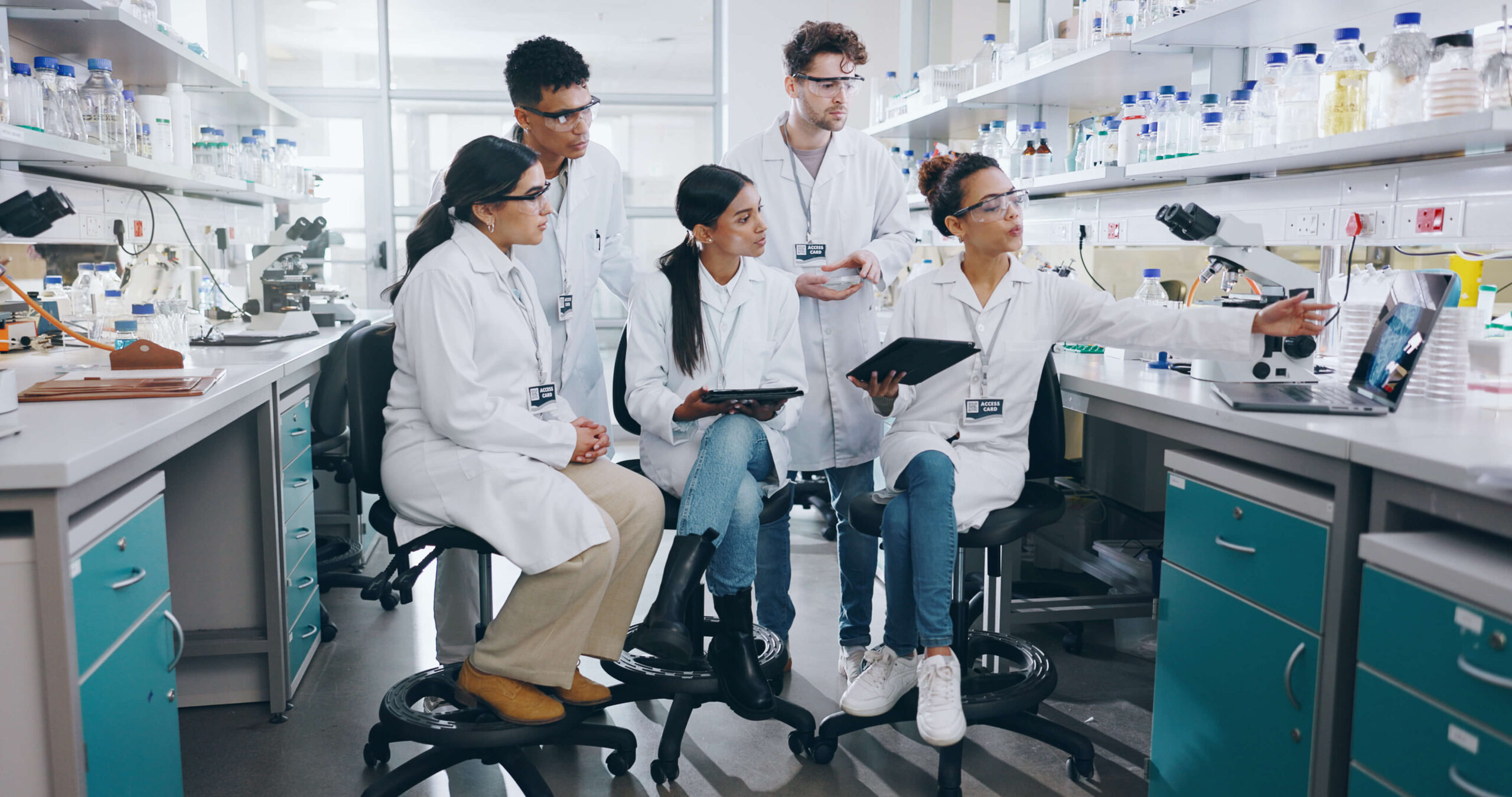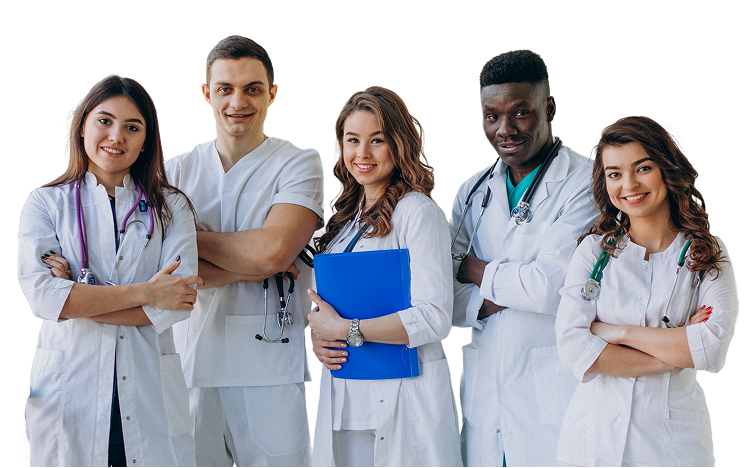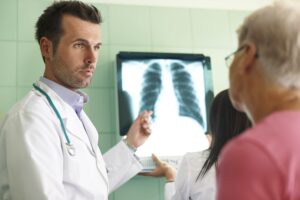For aspiring physicians, the transition from classroom-based theory to hands-on clinical practice is one of the most critical stages of medical education. Developing essential clinical skills is crucial for navigating complex medical situations. Caribbean medical schools are increasingly investing in cutting-edge simulation labs to provide students with a safe, structured, and realistic training environment.
Simulation labs serve as a bridge between learning from textbooks and working with real patients, ensuring students gain confidence, technical proficiency, and clinical judgment before entering clinical rotations. It helps medical students prepare for the real-world medical practice and face a rigorous, competitive process.
Learning how to apply clinical knowledge in practical settings is the ultimate goal of simulation labs in Caribbean medical schools. Let’s explore the real importance of simulation labs in medical education and how they can create a comprehensive learning experience for medical students.
Why Do Simulation Labs Matter in Medical Education?
Simulation labs are designed to mimic real-world medical scenarios through the use of manikins, virtual reality systems, and task trainers that replicate human anatomy and physiology. For Caribbean med schools, simulation labs are more than just technological additions; they represent a commitment to high-quality, patient-centered education.
By practicing in a simulation-based setting, students can refine their diagnostic and procedural skills without the immediate risk of harming a real patient. This makes simulation an essential component in preparing future doctors for the challenges of patient care.
From performing patient assessments to inserting IVs, taking pulses, performing CPR, and treating patients, students can practice all these tasks in a risk-free environment. Medical students will gain confidence in their diagnosis, treatment plans, and collaborative abilities. These simulated scenarios help students quickly develop clinical decision-making skills before entering the real medical world.
Key Benefits of Simulation Labs
1. A Safe, Low-Risk Environment
Students can practice complex procedures, such as intubation, IV insertions, and CPR, without fear of making mistakes that could endanger a patient. This freedom to learn from errors builds competence and confidence.
2. Hands-On Application of Theoretical Knowledge
Medical education begins with dense lectures and textbook study. Simulation labs bring these concepts to life by allowing students to apply what they have learned in real-time scenarios, making the knowledge stick more effectively.
3. Enhanced Understanding of Human Anatomy and Physiology
High-fidelity manikins accurately replicate vital signs, organ systems, and clinical responses, enabling students to understand how the body responds to disease, injury, and treatment. This dynamic learning approach deepens comprehension far beyond what diagrams can provide.
4. Development of Critical Thinking and Clinical Decision-Making
Simulation-based training includes case-based scenarios that require students to diagnose, determine treatment, and act promptly. This sharpens their ability to think critically, prioritize patient needs, and collaborate with peers; all these skills are essential during clinical rotations and residency.
5. Teamwork and Communication Skills
Medicine is rarely practiced in isolation. Simulation labs allow medical students to work in teams, simulating the dynamics of real hospital settings where collaboration with nurses, fellow physicians, and other healthcare professionals is key.
6. Preparation for High-Stakes Situations
Students are prepared for real-world emergencies by providing scenarios such as cardiac arrests, trauma cases, and obstetric emergencies in simulation labs. This exposure prepares them for rare but critical medical events, reducing hesitation and improving patient outcomes when such situations arise in clinical practice.
The Role of Simulation Labs at WUSOM
At Windsor University School of Medicine, simulation-based training is seamlessly integrated into the MD program to ensure students not only meet but exceed global medical education standards. By combining classroom study, hands-on simulation, and real-world clinical rotations, WUSOM prepares its graduates to become confident, competent, and compassionate physicians.
The university’s investment in advanced simulation technology reflects a forward-thinking approach to medical education. In these labs, students enhance their clinical knowledge, refine their problem-solving skills, and practice critical procedures in a safe and controlled environment. This practical exposure bridges the gap between theory and patient care, reinforcing both technical ability and clinical judgment.
Through the simulation-based training, WUSOM students gain the confidence and adaptability needed to excel in modern healthcare. Most importantly, it gives them a distinct advantage in the highly competitive U.S. residency match process, allowing them to stand out as well-prepared, practice-ready candidates.
How the Simulation Lab at WUSOM Prepares You for U.S. Residencies?
When students enroll in the best medical school in St. Kitts, they want to secure a US residency. WUSOM recognizes this demand and prepares its students through access to a state-of-the-art simulation center that bridges the gap between classroom learning and real-world patient care.
At Windsor University School of Medicine (WUSOM), simulation-based learning is an essential part of the medical education journey. WUSOM’s advanced simulation center is designed to provide students with practical, hands-on training that mirrors real-life clinical situations, while offering a safe and supportive environment for learning.
WUSOM’s emphasis on simulation gives its graduates a competitive edge in securing U.S. residencies. By the time they reach clinical rotations, students are already trained to handle complex medical challenges, making them strong candidates in the residency match and adaptable physicians in healthcare systems worldwide
Building a Strong Foundation for Residency
Residency programs in the U.S. look for candidates who can integrate theoretical knowledge with clinical application. While medical lectures and textbooks provide the academic base, simulation training at WUSOM offers the practical exposure needed to refine critical skills before students enter hospital rotations.
Safe Practice for Patient Care
The simulation center replicates real clinical environments using high-fidelity manikins and advanced medical technology. Students practice patient care procedures such as suturing, airway management, IV insertion, and resuscitation in a controlled, risk-free setting. By the time they face real patients, they are confident and competent in performing essential medical tasks.
Development of Clinical Reasoning Skills
Residency programs value doctors who can think critically and make accurate, timely decisions. Simulation exercises at WUSOM present students with diverse case scenarios like cardiac emergencies, respiratory distress, trauma, and obstetric complications that require rapid assessment and diagnosis. This helps sharpen diagnostic reasoning and clinical judgment, both of which are crucial for success in residency.
Refinement of Technical Skills
The U.S. healthcare system demands technical precision. Simulation-based training allows WUSOM students to repeatedly practice procedures until they achieve proficiency. Whether it’s inserting a central line or performing advanced life support, repetition in a realistic lab environment ensures students refine their skills without the fear of making harmful mistakes.
Confidence Building for High-Stakes Situations
Residency involves exposure to emergencies where hesitation can impact patient outcomes. The simulation center recreates high-pressure clinical events that push students to remain calm, focused, and decisive under stress. This level of preparation enables WUSOM graduates to handle real-world emergencies with confidence and competence.
Teamwork and Communication
Residency requires strong collaboration with healthcare teams. In simulation training, students practice coordinating with peers, nurses, and faculty in patient scenarios. This develops interpersonal communication, leadership, and teamwork skills, which are qualities that residency directors highly value.
Residency Readiness and Competitive Edge
By the time WUSOM students apply for residency, they have not only academic excellence but also hands-on experience that sets them apart. Simulation lab training demonstrates to residency directors that WUSOM graduates are practice-ready, adaptable, and skilled in inpatient care, making them stronger candidates in the match process.
Creating Residency-Ready Physicians
At WUSOM, the simulation center is more than just a training resource; they are a strategic advantage in preparing students for residency success. By providing opportunities to practice patient care, strengthen diagnostic reasoning, refine technical abilities, and build confidence, WUSOM ensures its graduates are well-prepared to meet the challenges of residency training and beyond.
Final Note
Simulation labs play a crucial role in your journey to becoming a physician. They allow students to practice diagnostic procedures, strengthen clinical decision-making, and build confidence in a safe environment. At WUSOM, state-of-the-art simulation labs are integrated into the MD program to ensure students graduate not only with strong academic knowledge but also with the practical expertise to excel in modern healthcare.
Are you ready to pursue your dream of becoming a doctor at a school that prioritizes hands-on training, U.S. residency readiness, and your long-term success, WUSOM is the ideal place to begin your medical journey. Enroll today!








